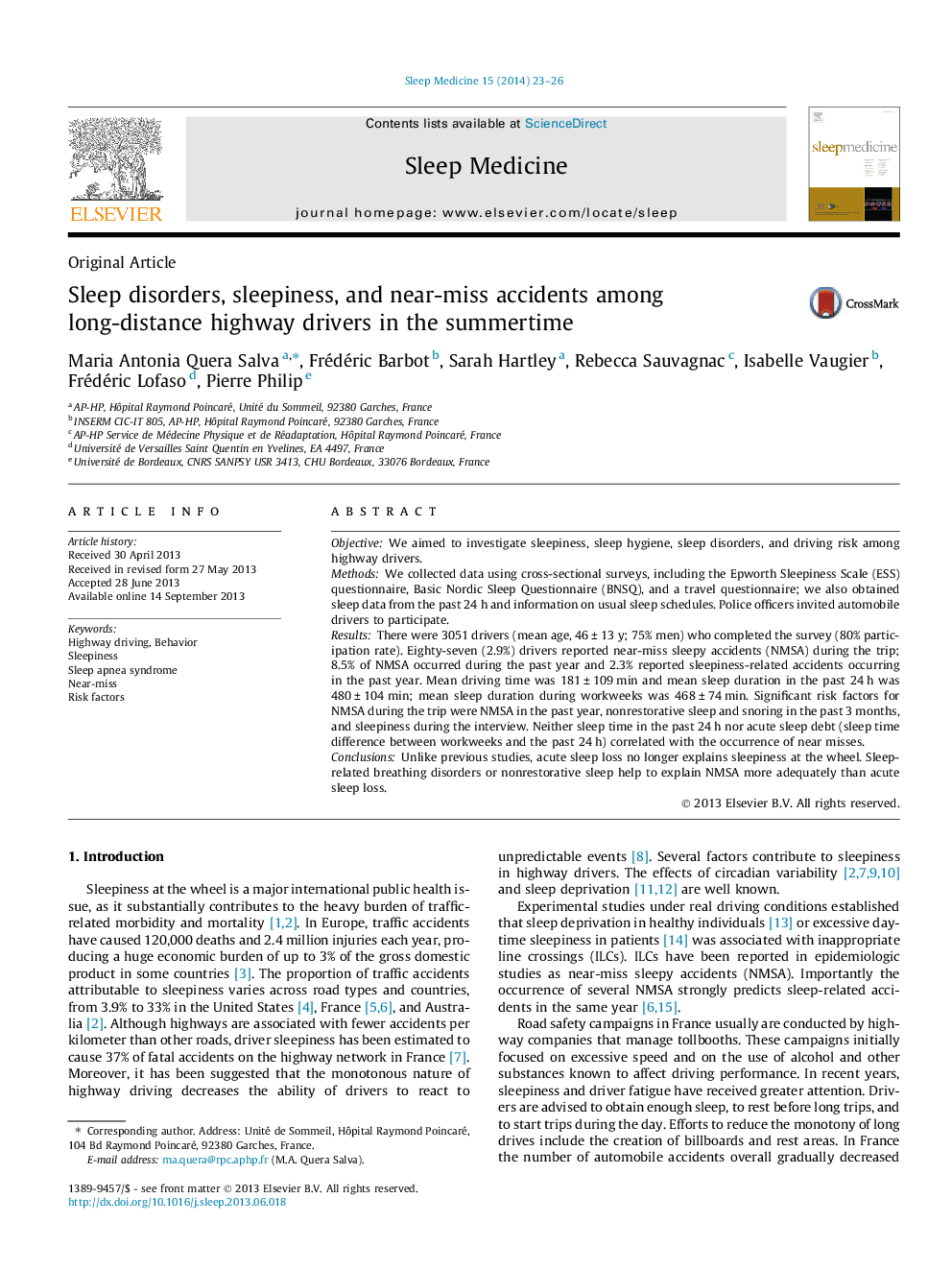| کد مقاله | کد نشریه | سال انتشار | مقاله انگلیسی | نسخه تمام متن |
|---|---|---|---|---|
| 6061307 | 1200261 | 2014 | 4 صفحه PDF | دانلود رایگان |
- Eighty-seven out of 3051 of drivers reported ⩾1 near-miss sleepy accident (NMSA) that day.
- Key risk factors were prior NMSA (<12Â months), chronic nonrestorative sleep, and snoring.
- Acute sleep debt is not related to NMSA.
ObjectiveWe aimed to investigate sleepiness, sleep hygiene, sleep disorders, and driving risk among highway drivers.MethodsWe collected data using cross-sectional surveys, including the Epworth Sleepiness Scale (ESS) questionnaire, Basic Nordic Sleep Questionnaire (BNSQ), and a travel questionnaire; we also obtained sleep data from the past 24 h and information on usual sleep schedules. Police officers invited automobile drivers to participate.ResultsThere were 3051 drivers (mean age, 46 ± 13 y; 75% men) who completed the survey (80% participation rate). Eighty-seven (2.9%) drivers reported near-miss sleepy accidents (NMSA) during the trip; 8.5% of NMSA occurred during the past year and 2.3% reported sleepiness-related accidents occurring in the past year. Mean driving time was 181 ± 109 min and mean sleep duration in the past 24 h was 480 ± 104 min; mean sleep duration during workweeks was 468 ± 74 min. Significant risk factors for NMSA during the trip were NMSA in the past year, nonrestorative sleep and snoring in the past 3 months, and sleepiness during the interview. Neither sleep time in the past 24 h nor acute sleep debt (sleep time difference between workweeks and the past 24 h) correlated with the occurrence of near misses.ConclusionsUnlike previous studies, acute sleep loss no longer explains sleepiness at the wheel. Sleep-related breathing disorders or nonrestorative sleep help to explain NMSA more adequately than acute sleep loss.
Journal: Sleep Medicine - Volume 15, Issue 1, January 2014, Pages 23-26
